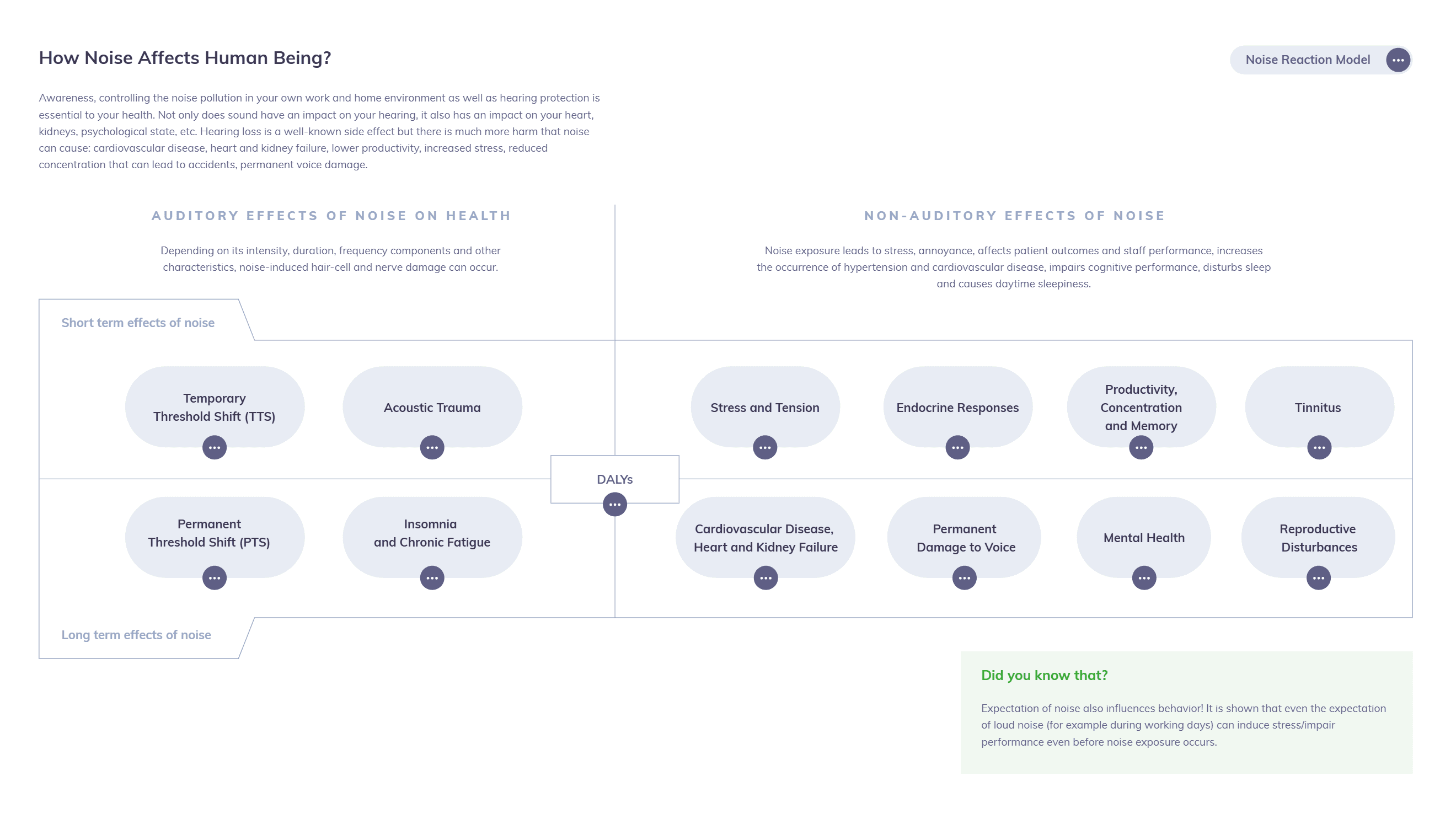Impact management (in the context of environmental protection) refers to the systematic process of identifying, assessing, and controlling the negative effects that human activities have on the natural and social environment.
Its goal is to minimize or prevent environmental damage while promoting sustainable development and protecting human health and well-being. Below, the diagram shows examples of the effects of one type of environmental pollution — noise — on humans. The active version of the slide is available for viewing at the link.

In practice, impact management involves a set of actions and strategies designed to reduce harmful environmental impacts such as air pollution, noise, water contamination, soil degradation, and vibrations. It is a core element of environmental management systems and sustainable urban planning.
Impact management is the practical application of knowledge, policy, and technology to reduce the harmful effects of human activities on the environment and human health. It connects scientific research, engineering, and environmental policy into a continuous process of improvement and protection of life quality.




